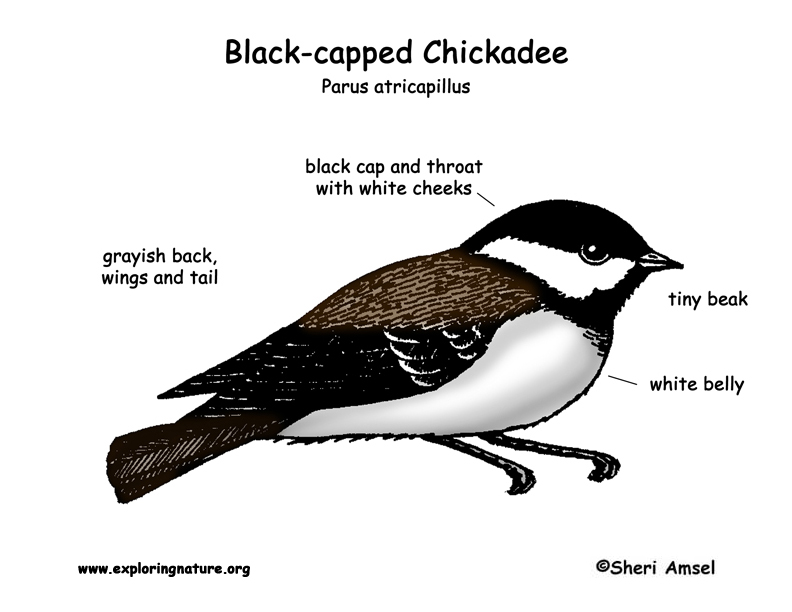

They are found all across North America from Southern Canada south to the middle United States.
They live in mixed forests, open woodlands, and wetlands to suburban areas.
They have a black cap and throat with white cheeks, a gray back, wings and tail and a white belly.
They are very common at feeders all winter. They have a chica-dee-dee-dee call. They form flocks in winter.
They eat insects and seeds.
They stay with one mate (monogamous) their whole lives. They nest in a tree hole. The female builds a nest inside made of moss and soft hairs. The female lays about 6 eggs and warms them (incubates) for almost 2 weeks. The male feeds the female while she nests.
Kingdom: Animalia
Phylum: Chordata
Subphylum: Vetebrata
Class: Aves
Order: Passeriformes
Suborder: --
Family: Paridae
Genus: Parus
Species: P. atricapillus
When you research information you must cite the reference. Citing for websites is different from citing from books, magazines and periodicals. The style of citing shown here is from the MLA Style Citations (Modern Language Association).
When citing a WEBSITE the general format is as follows.
Author Last Name, First Name(s). "Title: Subtitle of Part of Web Page, if appropriate." Title: Subtitle: Section of Page if appropriate. Sponsoring/Publishing Agency, If Given. Additional significant descriptive information. Date of Electronic Publication or other Date, such as Last Updated. Day Month Year of access < URL >.
Amsel, Sheri. "Chickadee (Black-capped)" Exploring Nature Educational Resource ©2005-2024. December 13, 2024
< http://www.exploringnature.org/db/view/201 >

